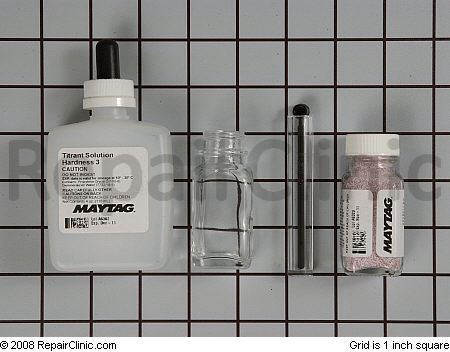
 Got my pictures developed from our winter backpacking trip last week to Carter Notch in the White Mountains where we stayed at the AMC Carter Notch hut. I went with my budrow, Dave, from PA. That was by far the best snowshoeing trip of the season, even if we did have to cut it short by a day due to weather. We started off with perfect weather and unbelievable views. We were struttin’ our stuff on Carter Dome and makin’ tracks up to Mt. Hight where we paused for a word from our sponsor and the views were even more incredible than atop Carter Dome. You can check out all the pictures from this great trip here.
Got my pictures developed from our winter backpacking trip last week to Carter Notch in the White Mountains where we stayed at the AMC Carter Notch hut. I went with my budrow, Dave, from PA. That was by far the best snowshoeing trip of the season, even if we did have to cut it short by a day due to weather. We started off with perfect weather and unbelievable views. We were struttin’ our stuff on Carter Dome and makin’ tracks up to Mt. Hight where we paused for a word from our sponsor and the views were even more incredible than atop Carter Dome. You can check out all the pictures from this great trip here.
Monthly Archives: February 2003
Appliance Tip of the Day: Dryers and Fires

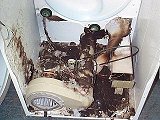 One of the ways that dryers can start household fires is by igniting the excess lint that accumulates around the motor, burner shroud (for gas dryers) and cabinet interior. Lint is composed of very small, dry clothing particles which includes cotton and polyesters–both very good fires starters. Polyesters are particularly pernicious fires starters and are very difficult to extinguish once they ignite. Polyesters, vinyl in particular, pose another fire hazard when used as vent hoses, which we’ll talk more about later in this article.
One of the ways that dryers can start household fires is by igniting the excess lint that accumulates around the motor, burner shroud (for gas dryers) and cabinet interior. Lint is composed of very small, dry clothing particles which includes cotton and polyesters–both very good fires starters. Polyesters are particularly pernicious fires starters and are very difficult to extinguish once they ignite. Polyesters, vinyl in particular, pose another fire hazard when used as vent hoses, which we’ll talk more about later in this article.
There are three things you can do to prevent the threat of fire from accumulated lint inside your dryer. First, clean your lint filter before every load. This will minimize the lint blow-by around the filter and save energy by helping the dryer run more efficiently.
Second, inspect your lint filter each time you pull it out. If you see any rips or distortions in the screen, replace the filter immediately.
Finally, have your dryer professionally disassembled and cleaned annually. A thorough professional cleaning removes accumulated lint and dirt from the dryer cabinet interior, motor, and burner or heating elements. If you’d like to do this cleaning yourself, this page will help you disassemble your dryer. In addition to substantially reducing the risk of dryer fires, this type of regular cleaning will help the drum bearings and rollers last longer, preventing or minimizing future service calls. Many dryer installations use the common, cheap white vinyl vent hose for the dryer exhaust. These hoses were never UL-approved for dryer installations and are increasingly being recognized by local building codes as fire hazards.
 The American Household Appliance Manufacturers Association (AHAM) recommends the use of rigid aluminum ducts, such as shown here. For any dryer, but especially gas dryers, white vinyl vent hose should never be used and if yours has this installed on it, replace it ASAP with approved materials.
The American Household Appliance Manufacturers Association (AHAM) recommends the use of rigid aluminum ducts, such as shown here. For any dryer, but especially gas dryers, white vinyl vent hose should never be used and if yours has this installed on it, replace it ASAP with approved materials.
There’s alot more to dryer venting that just running a collapsible hose. In addition to the type of allowable materials for the vent, there are all kinds of specifications for length and the number of allowable elbows and bends. All this is to ensure that air can move through the vent with sufficient velocity to prevent lint accumulation and dry the clothes in the shortest amount of time possible. Read more about dryer venting on this page.
 One of the biggest causes of vent hose fires is the ignition of accumulated lint inside the vent hose. Lint gets caught in the folds and creases and sticks there because of the humidity. Over time, the lint builds up to such a degree that the dryer cannot exhaust properly. This results in increased drying times initially and, ultimately, in a fire. Once a fire starts in a vinyl vent hose, the hose itself ignites and burns vigorously creating a fire that is very difficult to extinguish. The defense here is to clean your dryer vent out twice a year using a dryer vent lint brush.
One of the biggest causes of vent hose fires is the ignition of accumulated lint inside the vent hose. Lint gets caught in the folds and creases and sticks there because of the humidity. Over time, the lint builds up to such a degree that the dryer cannot exhaust properly. This results in increased drying times initially and, ultimately, in a fire. Once a fire starts in a vinyl vent hose, the hose itself ignites and burns vigorously creating a fire that is very difficult to extinguish. The defense here is to clean your dryer vent out twice a year using a dryer vent lint brush.
For more information on your dryer or to order parts, click here.

Takin’ Off to the Great White North
Word up: you won’t have ol’ Samurai to kick around after this Wednesday. My budrow from PA is driving up here to New Hampster on Wednesday and we’re heading up to the White Mountains for a five-day winter backpacking trip. ![]() We’ll be staying at the AMC high mountain huts at Carter Notch and Lonesome Lake. If all goes well, we’ll return on Monday, 2/24, sometime late afternoon. I may be back online Monday night (if I’m sober), Tuesday for sure.
We’ll be staying at the AMC high mountain huts at Carter Notch and Lonesome Lake. If all goes well, we’ll return on Monday, 2/24, sometime late afternoon. I may be back online Monday night (if I’m sober), Tuesday for sure.
Y’all be cool. I know we will be. ![]()
Appliance Tip of the Day: “How Much is a New One?”
 One of the most frequently asked questions we hear from our customers when contemplating whether or not to repair their appliance is, “How much is a new one?” This article gives you some insight into the major appliance market that will help you make the best decision.
One of the most frequently asked questions we hear from our customers when contemplating whether or not to repair their appliance is, “How much is a new one?” This article gives you some insight into the major appliance market that will help you make the best decision.
The first thing you need to realize is that retail prices for major appliances have stayed flat over the past 15 years even though manufacturing costs and inflation have risen steadily during that time. Manufacturers have been forced to cap their retail prices because their marketing people know that most people won’t pay increased prices for the typical home appliance. So, where $400 would buy you a top-quality washer 15 years ago, that same $400 today would only buy you a low-end machine that you’ll be throwing away or repairing every three to four years. What has changed?
The difference between the $400 washer of today and yesterday (or the $300 dishwasher or the $350 range, or the $300 dryer, or the $600 refrigerator, etc.) is in the internal components used in the machines. The lower end machines today are constructed of lower quality materials than similarly-priced machines 15 years ago. In part, this is attributable to the globalization of manufacturing with various internal parts made at different plants all over the world. While this has allowed manufacturers to cap retail prices for low-end machines over the last 15 years, it has also contributed to a degradation of quality.
You can still buy high-quality appliances but you’ll pay a correspondingly higher price tag for them– one that realistically reflects the increased costs of manufacturing high quality machines. For example, top-end dishwashers go for around $900, washers around $1,100, dryers for around $600, etc.
So, if you’re comparing having your existing machine repaired or replacing it with a low-end machine that is comparable in price with what you paid for your machine 10 to 15 years ago, you’re simply not making a valid comparison because they are not similar machines in either quality or durability. If you were to merely replace your existing appliance with one that costs about what you paid a decade ago, you’ll be repairing or junking the new machine every three to four years. The appliance game today is that you either pay more up front for a new, high-quality machine that will give you another 15 years of trouble-free operation or you pay less up front for a low-end machine and then pay-as-you-go for repairs.
The other cost associated with buying a new appliance are the “aggra-dollars.” That is, the aggravation and time spent that goes along with shopping for a new appliance, having it delivered, getting it installed, and disposing of your old one. If you’ve not experienced this joy recently, you’ll realize that the aggra-dollar factor can be a very significant cost.
So, when asking, “How much is a new one?” you need to consider both the quality of its replacement and the time-saving convenience of having your appliance properly repaired by competent professionals like myself or by fixing it yourself with the help of a genuine manufacturer’s repair manual.
When I do repairs, I use only factory-authorized parts and my work is guaranteed for one year parts and labor. I schedule repair appointments at your convenience and the complete repair cost is quoted up front. I will diagnose and evaluate your appliance to determine if it’s in your best interest to repair or replace it and make a recommendation accordingly.

Take Back the Power!
One week, I’m getting lots of traffic and my website is ranking high in the search engines. Then, the next week, the search engines do this mysterious thing called "re-indexing" and traffic drops off to a trickle. High tide and low tide, rain and shine. ![]() It’s a fickle game without any discernible rhyme or reason. Oh sure, search engines would have you believe that their rankings are objective and based on "secret" algorithms. But my own research has revealed that this is a big fat lie–search engine rankings come down to nothing more than the whim of a few snivelling hacks who review websites and make capricious decisions about site rankings while diddling their nipple rings and spiking their hair.
It’s a fickle game without any discernible rhyme or reason. Oh sure, search engines would have you believe that their rankings are objective and based on "secret" algorithms. But my own research has revealed that this is a big fat lie–search engine rankings come down to nothing more than the whim of a few snivelling hacks who review websites and make capricious decisions about site rankings while diddling their nipple rings and spiking their hair. ![]() I know my audience and I know that most of you are hard-working folks who live in the real world and are pretty good at fixing things.
I know my audience and I know that most of you are hard-working folks who live in the real world and are pretty good at fixing things. ![]() You don’t need some tattooed, pencil-necked, gothic über-geeks deciding for you which websites are most relevant to your search.
You don’t need some tattooed, pencil-necked, gothic über-geeks deciding for you which websites are most relevant to your search.
Let’s take back the power!
 I’m starting a campaign to bypass the search engines altogether and banish them into realm of insignificance, just like network news on television. I’m taking it to the street, yo! The best advertising is word of mouth. If you like this website and it helped you fix your stuff, take one of our bidness cards, and email it to as many friends as you can. You’ll help make the internet a better place, a place free from biased and corrupt search engines, while at the same time helping to promote one of the few truly useful sites on the web that really does save people money.
I’m starting a campaign to bypass the search engines altogether and banish them into realm of insignificance, just like network news on television. I’m taking it to the street, yo! The best advertising is word of mouth. If you like this website and it helped you fix your stuff, take one of our bidness cards, and email it to as many friends as you can. You’ll help make the internet a better place, a place free from biased and corrupt search engines, while at the same time helping to promote one of the few truly useful sites on the web that really does save people money.
Join the fight, take back the night! ![]()
Appliance Tip of the Day: Dishwasher Drainology

Your dishwasher sounds like it’s working up a storm, draining all that yucky dirty water out, but you open the door and all that dirty water is still there. Houston, we have a problem. Ok, grasshopper, go grab you a cold one and hang on for a magical mystery tour into what causes dishwasher draining problems, also called the ancient and mystical art of dishwasher drainology. Let’s take ’em one at a time:
- Using Too Much Detergent

Some fancy dishwashers with electronic controls have sensors that detect when the pump is not pumping water. Using too much detergent creates a great head of foam in the dishwasher basin, like pouring a beer too fast into a glass. So if you use too much soap in one of these so-equipped dishwashers, the sensors think the dishwasher is empty and cuts off the pump (For you gadget geeks out there, it senses the pump work by using a sensing resistor in series with the motor main winding.) While we’re talking about detergents, that store bought stuff you’re using is screwing up your dishwasher. - You Forgot to Remove the Disposal Drain Port Knockout Plug

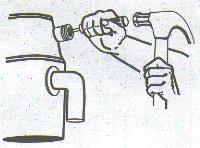 This usually only applies to the situation where you just installed a disposal and connected the dishwasher drain hose to the drain port on the disposal. Believe it or not, this happened to me on my first disposal installation job, too…no, not really. But I have seen many a grasshopper stumped by this.
This usually only applies to the situation where you just installed a disposal and connected the dishwasher drain hose to the drain port on the disposal. Believe it or not, this happened to me on my first disposal installation job, too…no, not really. But I have seen many a grasshopper stumped by this. - Drain Solenoid Not Opening
Some brands, notably GE/Hotpoint and Magic Chef, use a drain solenoid to open and close the dishwasher drain port. If this solenoid isn’t opening during the drain cycle, could be a bad timer or solenoid. - Worn Pump Impeller
Other dishwashers, like Whirlpool and KitchenAid, don’t use a drain solenoid but instead reverse the motor to drain the basin. One possible reason for poor draining in this type of dishwasher is a worn pump impeller. You usually figure this by elimination…no, not that kind of elimination you dawg! I mean, if all the other suspects listed here check out ok, then you’ve got a worn pump impeller. The rebuilding kit for this repair is very inexpensive and is a great beer drinking project.
- Kinked or Plugged Drain Hose
Drain hoses can become kinked or crimped from poor installation, stuff being moved around, lots of reasons. It happens. This diagram of drain hose configurations shows you several approved drain hose layouts. Drain hoses can also get plugged from gookus. Plugs usually occur at the one of the drain ports–either on the dishwasher or at the other end. The best test is to take the drain hose off at the dishwasher and pucker up and blow like a fish. Yep, it can be pretty nasty putting your mouth on that stuff but, hey, that’s why we appliance techs make the big money.
- Air Gap Plugged with Gookus
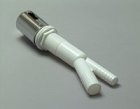 Plumbing codes may require an air gap in your dishwasher drain hose and many houses have ’em. These air gaps do a great job of keeping sewer water from backing up into your dishwasher but they can become a source of problems, too. Sometimes, they’ll get plugged with gookus and they’ll need to be cleaned out. If it’s real bad or corroded, do yourself a favor and install a new air gap kit.
Plumbing codes may require an air gap in your dishwasher drain hose and many houses have ’em. These air gaps do a great job of keeping sewer water from backing up into your dishwasher but they can become a source of problems, too. Sometimes, they’ll get plugged with gookus and they’ll need to be cleaned out. If it’s real bad or corroded, do yourself a favor and install a new air gap kit.
Well alright then.

Live Appliance Repair Help Gift Certificates
Here it is Valentine’s Day and you’re in the doghouse because you forgot to get that significant someone that special gift that says, "Hey, I care. Now what’s for dinner?" Many of you fixit dudes have emailed me with much weeping and gnashing of teeth about your dilemma, turning to the Samurai to offer the solution, as I have so many times before. Rest easy, my ruffled grasshoppers and unflutter your delicate wings flapping in the winds of anxiety: the Samurai has heard your plaintive cries and once again dashes in to preserve your domestic tranquility.
 Now, almost in time for Valentine’s Day, the Samurai and Fixitnow.com are proud to offer Live Help Gift Certificates. Give that special but almost-forgotten someone a truly special gift, even more precious than anything you could buy from the jewelry department at the Wal-Mart. Yes, you can give the gift of live appliance repair help with the Samurai. You can be heroes, just for one day. So get that stove or refrigerator or any other major appliance repaired right now with real-time, online help from the Samurai. Buy a Live Appliance Repair Help gift certificate now. Still only $25 and good for live help on any major appliance problem. To buy your gift certificate now, click the button below:
Now, almost in time for Valentine’s Day, the Samurai and Fixitnow.com are proud to offer Live Help Gift Certificates. Give that special but almost-forgotten someone a truly special gift, even more precious than anything you could buy from the jewelry department at the Wal-Mart. Yes, you can give the gift of live appliance repair help with the Samurai. You can be heroes, just for one day. So get that stove or refrigerator or any other major appliance repaired right now with real-time, online help from the Samurai. Buy a Live Appliance Repair Help gift certificate now. Still only $25 and good for live help on any major appliance problem. To buy your gift certificate now, click the button below:
For more information on live appliance repair help, click here.
Appliance Tip of the Day: The Hard Facts About Hard Water

Complaints about the washer or dishwasher not cleaning very well are one of the more common ones I get asked by grasshoppers at my website and from paying grasshoppers in the field–also known as customers. The first thing I always like to figger out in these cases is how hard the water is. What’s water hardness and why’s it so ding-dang important? Well, Hoss, hang on ’cause I’m gonna ‘splain it to you.
Hardness is a term them fancy-pants engineers use to talk about dissolved minerals, mostly calcium and magnesium, in the water. Water picks it up as it flows in rivers or in aquifers under the ground, dontcha know. It varies from place to place according to the types of rocks you got.
Anyway, them fancy-pants engineers went on and created a way of measuring hardness. They call it grains per gallon, and you’ll see ’em write it as "gpg." So, the more grains of calcium or magnesium dissolved in each gallon of water, the harder it is.
So, what’s wrong with having a little calcium and magnesium in the water? Nothing if it’s just a little, like less than 3 gpg. But, when you start getting water with 10 gpg or more, you gots what we in the trade call, "hard water." And if it’s more that 14 gpg, it’s called "damn hard water." Y’see, Hoss, in a washer or dishwasher, these little calciums and magnesiums suck up the soap or detergent leaving less of it available to clean the crud off your clothes or dishes. As a result of water hardness, it takes more soap or detergent to get your clothes or dishes to an acceptable level of cleaness. Now you see why I always wanna find out what the water hardness is when I’m dealing with a poor cleaning complaint?
Now here’s something else to think about. The detergent instructions on the box are based on average hardness. Average hardness in the U.S. is defined as 6.6 gpg and 6.1 gpg in Canada. Now this cuts both ways, Hoss, hang with me for a minute. What if your actual water hardness is only 2 gpg but you’re putting detergent in your washer based on the directions on the box (typically a standard "scoop" or "capful")? Well, it don’t take a certifiable appliance guru like myself to figger out that you’re using too much freakin’ detergent! You’re not only wasting money, but you’re wearing lots o’ that stuff in your clothes, too.
Awwite, what if your actual water hardness was 15 gpg and you’re putting in detergent according to the amount on the box? Why, it means you are one dirty dude ’cause your clothes ain’t getting clean when you wash ’em. Think about that next time you put on a pair of "clean" underwear.
Not only is hardness a problem from the standpoint of cleaning your stuff, it messes up your appliances, too. Oh sure, after a while, all kinds of "scale" from the hardness collects on the innards of your washer and dishwasher and screws it all up. But hey, I love the work it generates so I ain’t complainin’!
Now, the question you’re all axin’: "how do I measure the hardness of my water?" Piece of pie. Come git you the Maytag Water Hardness Kit. Easy to use and just takes a second.
Well alright then.

Appliance Tip of the Day: Use and Care Manuals
 Just moved into a house or you’re renting a place and you can’t find any of the manuals to your appliances? Ahh, Grasshopper, unforrow that brow and unbunch those panties because you can get replacement owner’s manuals for most major appliances, usually for free and conveniently online, too.
Just moved into a house or you’re renting a place and you can’t find any of the manuals to your appliances? Ahh, Grasshopper, unforrow that brow and unbunch those panties because you can get replacement owner’s manuals for most major appliances, usually for free and conveniently online, too.
- Maytag
Includes Maytag, Magic Chef, Crosley, Norge, Admiral, and Hardwick. - Jenn Air
- General Electric
Includes GE, Hotpoint, and RCA. - Whirlpool
Includes Whirlpool and Roper. - Frigidaire
Includes Frigidaire, Gibson, White-Westinghouse, and Kelvinator. - Amana
- Kenmore

Appliance Service Calls
I’ve always had a bushy head of hair and I usually don’t bother trimming my beard. So, this is how I used to look when I’d go out for a service call:
But I starting thinking maybe I was scaring my customers. I dunno, little things, like I go up to the house and knock on the door and they’d answer with a shotgun in their hands. So, I figgered I better git me a hair cut and now I look like this:

And would you believe that when I go out on service calls, I still get people answering the door armed!? That’s what I love about this bidness–there’s just no telling what people will do!
Live Help Update
I’ll be online for live help tonight from 7pm to whenever (New Hampster time). "Bring me your tired, your poor, your broken appliances yearning to be fixed." ![]()
Beer Drinking Update
 I dunno, she looked pretty fine when I was slamming down the suds last night at the brew pub.
I dunno, she looked pretty fine when I was slamming down the suds last night at the brew pub.
Live Help Update
I was talking to a grasshopper on live chat the other night and he told me to tell my boss that I was doing a great job. So I shuffled upstairs to my wife and said, "Great job, Hon."
I’ve talked to several other people on chat who think Fixitnow.com is a high-budget operation with a staff of technicians and webmasters. I don’t know if that means I’m doing a good job or not. The truth is that this entire website, every little typo, every poorly-formed sentence, and all the pages you sift through looking for pearls of appliance wisdom are crafted by my boney fingers, and mine alone, and it all happens down in my basement. Yep, just little ol’ me down in my damp, dark basement, all alone. I’ve spent thousands of hours down here working on this website making it a comprehensive, useful, easy-to-use, and most of all, fun place for you to come and learn how to fix your appliances.
As for the budget, that comes from Beer Fund donations, which have been far too little to justify the time I’ve spent away from my family to work on this website. It’s amazing: people won’t think twice about shelling out a few bucks for an album or tickets to a movie, but somehow think that good, convenient appliance repair help should be free, "’cuz it’s on the innernet, an’ all." I can’t count the number of people who, when I absolutely nailed their appliance problem on live help, were very thankful, promised to donate to the Beer Fund, but never did. If I could pay real-world expenses on empty promises, I’d be living in a mansion right now.
But these fiscal challenges have created an excellent opportunity for me to develop a cool new program here at Fixitnow.com: Live Appliance Repair Consultations. I think it’s a great way for you to get personal, immediate help fixing your appliances while helping to ensure that I can meet my on-going operating expenses. Check it out.
"But wait," you cry, "I thought this website was supposed to be free?" To misquote the late, great Plato, "What is free, Phaedrus, and what is not? Need we anyone tell us these things?" Yes, the vast repository of appliance wisdom here at Fixitnow.com will continue to be freely available to all seekers of appliance wisdom. This includes the Online Repair Manuals, the accumulated wisdom in Moostafa’s Mecca of Appliance Repair and the many resources available at the Appliantology group, such as the repair photos and the help forum. But personal, live appliance repair consultation with me should certainly be worth a very modest, even ridiculously low consulting fee. The consulting fee is on a per-issue basis, so if you pay for a consultation on your dishwasher and you later need help with your dryer, it’s a separate fee. On the other hand, if it takes 27 chat sessions to solve your problem, there’s no additional charge–one fee covers one problem until it’s whipped.
And just what makes me so special that I think I can charge for advice? Well, I could start thumping my chest about my two engineering degrees and years of appliance repair experience but, honestly, I think that’s a little crass. The fact is that I have real-world, valuable appliance repair knowledge and I can absolutely help you fix it yourself, either through the free resources available on my website or via a live appliance repair consultation for a miniscule fee.
If you’ve donated to the Beer Fund in the past, I am grateful for your support and I honor your integrity. And to show my gratitude for your willingness to support this website, all past donors to the Beer Fund, in any amount, even as little as $1, will receive Live Appliance Repair Consultations on any appliance they’re working on for as long as they live…or for as long as this website lives, whichever ends first. Just identify yourself as a past Beer Fund contributor when you ring me up for live help so I can look you up (I have a record of all past contributors) and we’ll go to work fixing your appliance.
Ok, let’s get stuff fixed!
Appliance Tip of the Day: Microwave Oven Know-How
Working on your microwave oven? Check out the online microwave repair manual first and you just might find out how to fix it. If not, there’s more detailed help in these two fine references below. If you’re working on an American-made microwave (e.g., Whirlpool, Maytag, etc.) then get the Repair-Master microwave oven repair manual. If you’re working on a Sharp or some other brand, then you need Troubleshooting and Repairing Microwave Ovens.
Repair-Master microwave oven repair manual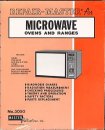 Specific repair help for most American-made brands. |
Troubleshooting and Repairing Microwave Ovens Includes fundamental information applicable to all microwave ovens, regardless of brand. |

Phone Sex
![]() So you’ve heard of slamming, right? That’s where a phone company comes along and takes over your long distance service without you knowing it and then slams you with an whopping phone bill. Well, look out, there’s a newer, slimier practice emerging among phone companies called casual billing.
So you’ve heard of slamming, right? That’s where a phone company comes along and takes over your long distance service without you knowing it and then slams you with an whopping phone bill. Well, look out, there’s a newer, slimier practice emerging among phone companies called casual billing.
Casual billing is similar to slamming in that you get billed for services from another long distance carrier. But the difference is that they don’t switch you over permanently, they just bill you at outrageous rates for a few calls and their charges appear on your local phone bill.
MCI did this to me recently. I made four long distance faxes on our business phone, connect time of about 15 seconds each, and they charged me $5 per fax! When I called MCI, the trained liar I talked to said that it was because the calls were randomly assigned to a long distance carrier by my local phone company (Verizon) and the calls were charged at market rates because I wasn’t on a calling plan and, oh by the way, would I like to sign up? Smelling fecal matter, I told her that if MCI was going to screw me like that, I better at least get a kiss. Then I called Verizon. They confirmed that what the trained liar at MCI told me was a load of horse $hit and they deleted the charge. If MCI wants the money, they have to come after me directly instead of weaseling it through Verizon. ![]() With business practices like that, is it any wonder that MCI/Worldcom went bankrupt?
With business practices like that, is it any wonder that MCI/Worldcom went bankrupt?
Look over your phone bill carefully. You have been warned. ![]()

